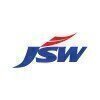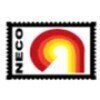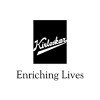
i
JSW
Steel
Filter interviews by
JSW Steel Graduate Engineer Trainee (Get) Interview Questions and Answers
10 Interview questions
A blast furnace is a type of metallurgical furnace used for smelting to produce industrial metals.
Blast furnace is used to extract iron from its ore through a chemical process called reduction.
It operates by continuously feeding the raw materials (iron ore, coke, and limestone) at the top of the furnace.
Hot air is blown into the bottom of the furnace to create a high temperature environment for the chemical reacti...
A sequential timer is a device that controls the timing of events in a sequence.
It is used to control the timing of events in a specific sequence.
It can be programmed to start and stop at specific times.
It is commonly used in industrial automation and control systems.
Examples include traffic lights, conveyor belts, and assembly lines.
Yes, India is gradually moving towards a cashless economy.
The government's push towards digital payments through initiatives like UPI, BHIM, and Aadhaar Pay.
Increasing adoption of mobile wallets and online payment platforms like Paytm, Google Pay, and Amazon Pay.
Growing popularity of contactless payments through NFC-enabled cards and mobile phones.
Demonetization in 2016 also played a role in promoting cashless tra...
Steel can be classified into various types based on its composition and properties.
Carbon steel - contains carbon as the main alloying element
Stainless steel - contains chromium and nickel for corrosion resistance
Alloy steel - contains other elements like manganese, silicon, and copper for improved properties
Tool steel - contains tungsten, molybdenum, and cobalt for high hardness and wear resistance
High-speed stee...
What people are saying about JSW Steel





Bernoulli's theorem states that as the speed of a fluid increases, its pressure decreases.
The theorem is based on the principle of conservation of energy.
It is commonly used in fluid dynamics to calculate the pressure and velocity of fluids in motion.
The theorem is applicable to both incompressible and compressible fluids.
An example of Bernoulli's theorem in action is the lift generated by an airplane wing.
The the...
Iron-carbon diagram shows the relationship between carbon content and properties of iron-carbon alloys.
The diagram is used to determine the microstructure and properties of steel.
It shows the different phases of iron and carbon at different temperatures.
The phases include ferrite, austenite, cementite, and pearlite.
The diagram is important for understanding heat treatment processes and material selection.
For examp...
Answering questions related to transformers, MOSFETs, generators, and major projects.
A transformer is an electrical device that transfers energy between two or more circuits through electromagnetic induction.
MOSFET is a type of transistor used for amplification and switching of electronic signals. It is used in power supplies, motor control, and audio amplifiers.
A generator converts mechanical energy into electric...
The laws of thermodynamics and the difference between 2-stroke and 4-stroke engines.
The laws of thermodynamics are fundamental principles that govern energy and its transformations.
There are four laws of thermodynamics: zeroth law, first law, second law, and third law.
The zeroth law states that if two systems are in thermal equilibrium with a third system, they are in thermal equilibrium with each other.
The first ...
Stress and strain are related to the deformation of a material under applied forces.
Stress is the force applied per unit area, while strain is the measure of deformation caused by stress.
Stress is a measure of the internal resistance of a material to deformation, while strain is a measure of the material's response to stress.
Stress is typically measured in units of force per unit area (such as Pascal or psi), whil...
Stress and strain are related to the deformation of materials under external forces.
Stress is the force applied per unit area, while strain is the resulting deformation or change in shape.
Stress is a measure of the internal resistance of a material to deformation, while strain is a measure of the material's response to stress.
Stress is typically measured in units of force per unit area (such as Pascal or psi), whi...
JSW Steel Graduate Engineer Trainee (Get) Interview Experiences
35 interviews found
I appeared for an interview before Feb 2024.
It is easy to tackle the questions.
Moderate questions are manageable, but I am capable of handling them.
(3 Questions)
- Q1. Can you describe your internship experience?
- Ans.
My internship experience was incredibly rewarding and provided me with valuable hands-on experience in my field.
Worked closely with experienced professionals in the industry
Gained practical skills and knowledge that I couldn't have learned in a classroom
Contributed to real projects and made a meaningful impact
Received mentorship and guidance to help me grow professionally
- Q2. Can you provide details about the projects mentioned in your resume?
- Ans.
I have worked on various projects including a mobile app development project and a data analysis project.
Developed a mobile app for tracking daily exercise and nutrition intake
Conducted data analysis on customer feedback to improve product features
Collaborated with a team of developers and designers to create user-friendly interfaces
- Q3. Some basic technical questions in mechanical
(2 Questions)
- Q1. Relocation related questions
- Q2. Are you prepared to work on the shop floor?
- Ans.
Yes, I am prepared to work on the shop floor.
I have previous experience working on the shop floor in a retail environment.
I am comfortable with tasks such as stocking shelves, assisting customers, and operating cash registers.
I am physically fit and able to stand for long periods of time.
I am a quick learner and can adapt to new tasks and environments easily.
Interview Preparation Tips
I appeared for an interview before Nov 2023.
It is good and easy comparitively
(2 Questions)
- Q1. Asked about internship
- Q2. Explain about blast furnace
- Ans.
A blast furnace is a type of metallurgical furnace used for smelting to produce industrial metals.
Blast furnace is used to extract iron from its ore through a chemical process called reduction.
It operates by continuously feeding the raw materials (iron ore, coke, and limestone) at the top of the furnace.
Hot air is blown into the bottom of the furnace to create a high temperature environment for the chemical reactions t...

Basic aptitude includes all quant, English language test, and reasoning
30 min gd each gets 2 chances to explain their points, topic given by the hr
(2 Questions)
- Q1. Based on your core subject it will be asked
- Q2. Mechanical core, electronics sensors, plc, your internship experience was noted to get more answers and confidence out of you
Interview Preparation Tips

Easy to solve the questions
Good test to know the solutions
(2 Questions)
- Q1. Stress and strain differences
- Ans.
Stress and strain are related to the deformation of materials under external forces.
Stress is the force applied per unit area, while strain is the resulting deformation or change in shape.
Stress is a measure of the internal resistance of a material to deformation, while strain is a measure of the material's response to stress.
Stress is typically measured in units of force per unit area (such as Pascal or psi), while st...
- Q2. Stress strain difference
- Ans.
Stress and strain are related to the deformation of a material under applied forces.
Stress is the force applied per unit area, while strain is the measure of deformation caused by stress.
Stress is a measure of the internal resistance of a material to deformation, while strain is a measure of the material's response to stress.
Stress is typically measured in units of force per unit area (such as Pascal or psi), while str...
I applied via Campus Placement and was interviewed in Aug 2023. There were 2 interview rounds.

(2 Questions)
- Q1. 1. Intership project questions
- Q2. Academic project related questions

Basic normal questions and coding
One needs to be good at communication . all were participating very eagerly in gd
(2 Questions)
- Q1. Tell me about yourself? explain about the industrial internship you have done? completely asked on core topics no technical knowledge needed good experience and considered the industrial experience
- Q2. Tell me about yourself? explain about the industrial internship you have done?
Interview Preparation Tips
I applied via Campus Placement and was interviewed in Dec 2022. There were 5 interview rounds.

It was little bit easy
Based on current conditions
(2 Questions)
- Q1. Longer technical interview and round is too much good
- Q2. More than 30 minutes
(1 Question)
- Q1. Easiest round of process
Interview Preparation Tips
- Hydraulics
- Drawing
- degree projects
- basic manufacturin
I applied via Job Portal and was interviewed in Sep 2023. There was 1 interview round.
It was a 60 min test. All questions were nornal.
Interview Preparation Tips
Graduate Engineer Trainee (Get) Interview Questions & Answers
posted on 28 Jan 2023
I applied via Campus Placement and was interviewed in Dec 2022. There were 4 interview rounds.

First round was aptitude round.
I was given sustainable development
(2 Questions)
- Q1. Questions were related to Heat exchanger
- Q2. And were related to pumps
Interview Preparation Tips

Question were of apti eng and li.it was mid level que.
(2 Questions)
- Q1. Given topic to discusss 1.ott platform vs cinema halls 2.Is ind ready for cashless economy?
- Q2. 2.is ind ready for cashless economy
- Ans.
Yes, India is gradually moving towards a cashless economy.
The government's push towards digital payments through initiatives like UPI, BHIM, and Aadhaar Pay.
Increasing adoption of mobile wallets and online payment platforms like Paytm, Google Pay, and Amazon Pay.
Growing popularity of contactless payments through NFC-enabled cards and mobile phones.
Demonetization in 2016 also played a role in promoting cashless transact...
(2 Questions)
- Q1. Tell about yourself , what are you good at
- Q2. Question on core knowledge of subject of steell
Interview Preparation Tips
JSW Steel Interview FAQs
Some of the top questions asked at the JSW Steel Graduate Engineer Trainee (Get) interview -
The duration of JSW Steel Graduate Engineer Trainee (Get) interview process can vary, but typically it takes about less than 2 weeks to complete.
Tell us how to improve this page.
JSW Steel Interviews By Designations
- JSW Steel Assistant Manager Interview Questions
- JSW Steel Graduate Engineer Trainee (Get) Interview Questions
- JSW Steel Deputy Manager Interview Questions
- JSW Steel Junior Engineer Interview Questions
- JSW Steel Assistant Engineer Interview Questions
- JSW Steel Manager Interview Questions
- JSW Steel Electrical Engineer Interview Questions
- JSW Steel Senior Engineer Interview Questions
- Show more
Overall Interview Experience Rating
based on 23 interview experiences
Difficulty level
Duration
Graduate Engineer Trainee (Get) Interview Questions from Similar Companies
JSW Steel Graduate Engineer Trainee (Get) Reviews and Ratings
based on 64 reviews
Rating in categories
|
Assistant Manager
3.5k
salaries
| ₹5.9 L/yr - ₹12 L/yr |
|
Junior Engineer
2.3k
salaries
| ₹2.5 L/yr - ₹5.6 L/yr |
|
Deputy Manager
1.7k
salaries
| ₹9.1 L/yr - ₹16 L/yr |
|
Manager
1.1k
salaries
| ₹11.2 L/yr - ₹20 L/yr |
|
Senior Engineer
1.1k
salaries
| ₹4.6 L/yr - ₹11 L/yr |

Tata Steel

Jindal Steel and Power

Jindal Stainless

Jindal Saw
- Home >
- Interviews >
- JSW Steel Interview Questions














